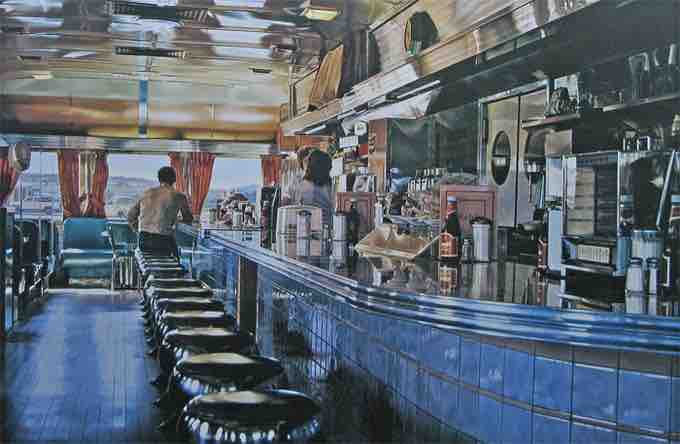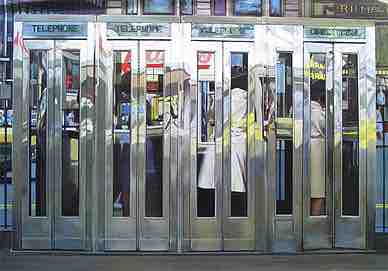Photorealism
Photorealism, also known as super-realism or hyper-realism, is a genre of art that makes use of photography in order to create a highly realistic art work in another medium. The term was first applied in America during the late 1960s and 1970s. Similar to Pop Art, Photorealism was also a reactionary movement that stemmed from the ever increasing and overwhelming abundance of photographic media, which by the mid 20th century had grown into such a massive phenomenon that it was threatening to lessen the value of imagery in art. While pop artists were primarily pointing out the absurdity of the imagery that dominated mass culture—such as advertising, comic books, and mass-produced cultural objects—photorealists aimed to reclaim and exalt the value of the image.
Process
Photorealist painters gather imagery and visual information through the use of the photograph, which is then transferred onto the canvas either by projecting a slide of the image onto the canvas, or by the traditional technique of the grid. The resulting images are often direct copies of the photograph, though usually on an increased scale. Stylistically, this results in painted compositions that are tight and precise, often with an emphasis on imagery that requires a high level of technical prowess and virtuosity to simulate; for example, reflections in surfaces and embellished, man-made environments .

Ralph Goings, Ralph's Diner, 1981-82, oil on canvas.
This painting by Ralph Goings displays the artists technical prowess in the realistic depiction of many reflective, textured surfaces.

Richard Estes, Telephone Booths, 1968, oil on canvas
Richard Estes reproduces in a paint the complex image of a reflected urban environment on a telephone booth.
The first generation of American photorealists comprising the art historical movement included such painters as Richard Estes, Ralph Goings, Chuck Close, Charles Bell, Audrey Flack, Don Eddy, Robert Bechte, and Tom Blackwell.
Chuck Close, Mark (1978–1979), acrylic on canvas, left; detail of eye, right
Chuck Close is known for his intensely detailed paintings which are essentially indistinguishable from photographic images.